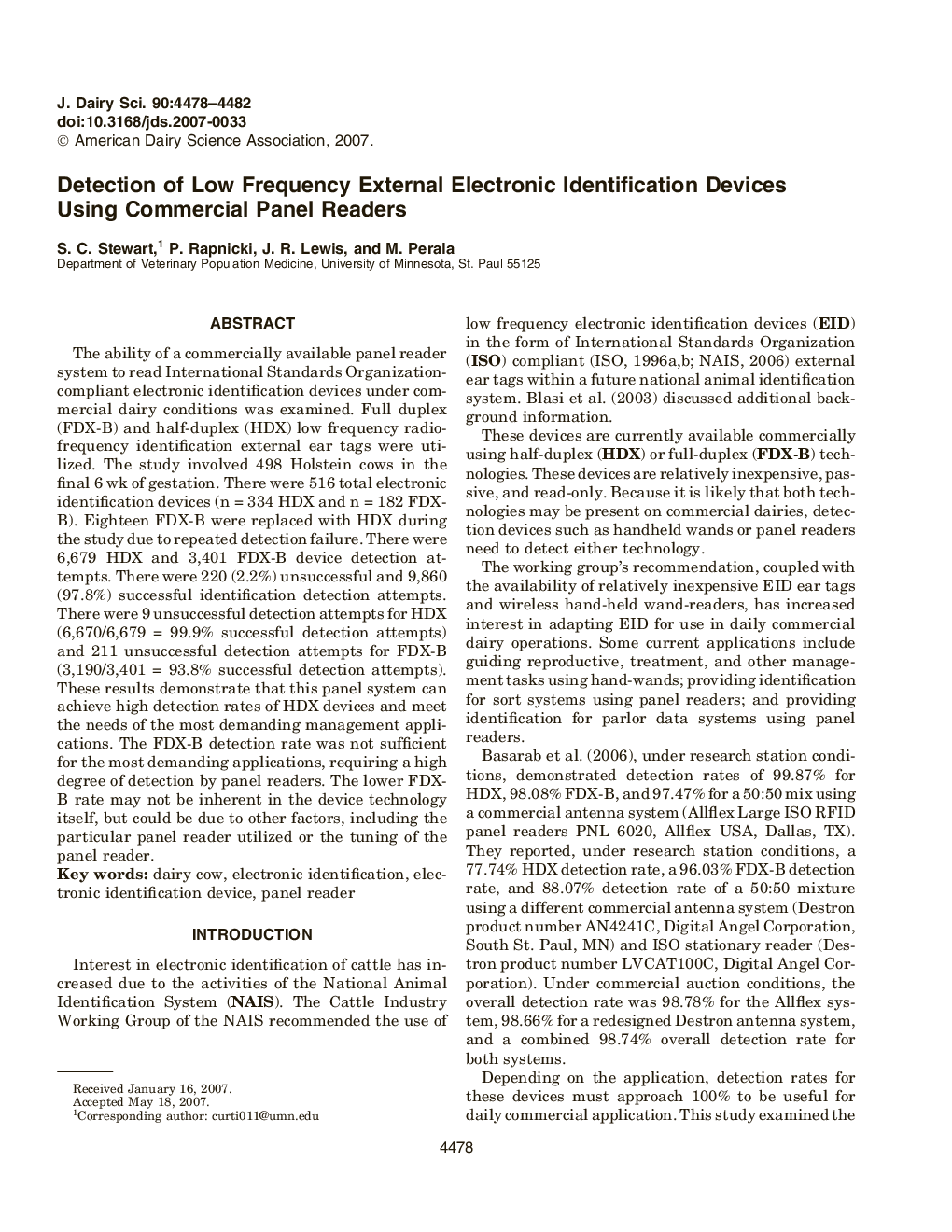| Article ID | Journal | Published Year | Pages | File Type |
|---|---|---|---|---|
| 2440651 | Journal of Dairy Science | 2007 | 5 Pages |
Abstract
The ability of a commercially available panel reader system to read International Standards Organization-compliant electronic identification devices under commercial dairy conditions was examined. Full duplex (FDX-B) and half-duplex (HDX) low frequency radio-frequency identification external ear tags were utilized. The study involved 498 Holstein cows in the final 6 wk of gestation. There were 516 total electronic identification devices (n = 334 HDX and n = 182 FDX-B). Eighteen FDX-B were replaced with HDX during the study due to repeated detection failure. There were 6,679 HDX and 3,401 FDX-B device detection attempts. There were 220 (2.2%) unsuccessful and 9,860 (97.8%) successful identification detection attempts. There were 9 unsuccessful detection attempts for HDX (6,670/6,679 = 99.9% successful detection attempts) and 211 unsuccessful detection attempts for FDX-B (3,190/3,401 = 93.8% successful detection attempts). These results demonstrate that this panel system can achieve high detection rates of HDX devices and meet the needs of the most demanding management applications. The FDX-B detection rate was not sufficient for the most demanding applications, requiring a high degree of detection by panel readers. The lower FDX-B rate may not be inherent in the device technology itself, but could be due to other factors, including the particular panel reader utilized or the tuning of the panel reader.
Keywords
Related Topics
Life Sciences
Agricultural and Biological Sciences
Animal Science and Zoology
Authors
S.C. Stewart, P. Rapnicki, J.R. Lewis, M. Perala,
